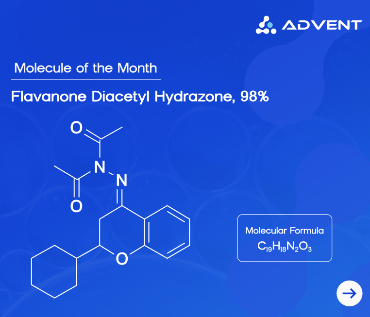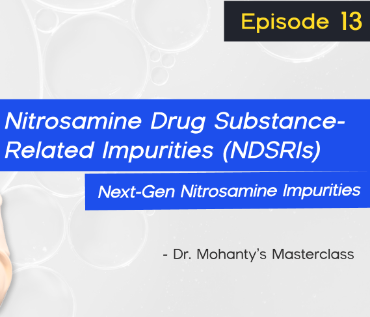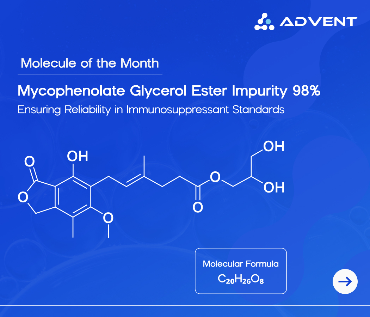The regulatory authorities set stringent standards, and the manufacturing companies must strongly comply with them. In such a scenario, just imagine the havoc it creates when a product is recalled due to the presence of trace levels of carcinogenic impurities like nitrosamines.
These impurities get introduced into the product during the manufacturing or packaging processes. To detect these impurities, the instrument must be highly sensitive, and the internal standards must be robust and produce reproducible results.
This is where Deuterated Nitrosamines come into the picture.
At Advent, we manufacture highly pure impurities to help you meet the most stringent demands of analytical chemistry, toxicology, and regulatory testing. In this blog, we discuss their significance and applications. Keep reading to learn more.
What Are Deuterated Nitrosamines?
Deuterated Nitrosamines are nitrosamines having one or more hydrogen atoms are replaced with its isotope- Deuterium. Deuterium is a non-radioactive isotope of Hydrogen, and such stable isotope-labelled analogs are commonly used in the preparation of internal standards for LC-MS/MS and GC-MS studies. Due to the Deuterium atoms, these nitrosamine analogs are structurally and chemically nearly identical to their native forms, and have a slightly higher molecular weight. This slight difference allows precise mass differentiation during spectrometric detection, thus making them an invaluable chemical in quantitative and qualitative analysis.
Why do we need to detect Nitrosamines?
The compounds like N-Nitrosodimethylamine, N-Nitrosodiethylamine, and N-Nitroso-N-methyl-4-aminobutyric acid have been found in several pharmaceutical products such as hyperstensives and ranitidine-based antacids. During processes like manufacturing and packaging, using contaminated solvents introduces these impurities. The International Agency for Research on Cancer (IARC) classified nitrosamine compounds as Group 2A carcinogens. The regulatory bodies therefore mandate strict adherence to the stringent permissible limits (26-96 nanograms/day) in the pharma products, depending on the specific nitrosamine and its toxicological profile.
In order to meet these stringent standards, the manufacturers and testing labs must implement analytical protocols to detect nitrosamines in trace levels, up to ppt (parts per trillion). These deuterated standards are essential to ensure the safety of the product and traceability of the methods.
Applications of Deuterated Nitrosamine
Nitrosamine analogs are used in the following ways:
As an Internal Standard for Quantitative Precision:
Deuterated Nitrosamine is the most important chemical in mass spectrometry. When its known concentration is added to a sample, it behaves similarly to the target nitrosamine throughout the extraction and analysis process. Therefore, labs can check for sample loss during the preparation, improve the accuracy and precision of trace-level quantification, and draw calibration curves using isotope dilution methods.To Ensure Regulatory Compliance:
The Regulatory bodies, such as the FDA and EMA, ask for validated, reproducible analytical methods to detect nitrosamines. Use of deuterated nitrosamines in lab protocols shows a commitment to control risk-based impurities, data reliability and audit readiness, consistency in method validation, and LOD and LOQ requirements.
Offers Versatility across Matrices:
Whether you are checking APIs, finished dosage forms, biological fluids or environmental samples, deuterated nitrosamines are well-suited for different purposes. They are commonly used to analyse water potability, food safety, cosmetic impurities, and soil and air quality studies.Used in Metabolic tracing:
Deuterated Nitrosamines help researchers trace bioactivation pathways, identify metabolites, study pharmacokinetics and biodistribution when administered in vitro or in vivo.
Deuterated Nitrosamine Standards Available
Here is the list of most commonly used standards across various industries:
NDMA-d₆, an analog of N-Nitrosodiethylamine, has six hydrogen atoms replaced with deuterium atoms. It is used as an internal standard for NDMA.
NDEA-d₁₀, an analog of N-Nitrosodiethylamine, is used as an internal standard for NDEA.
NMBA-d₃, an analog of N-Nitroso-N-methyl-4-aminobutyric acid, is used to test impurities in pharma products
Where to Buy Deuterated Nitrosamine Online?
Advent provides Fine & Specialty chemicals, and manufactures customized products and performance materials. With more than 3000 products, like HPLC grade solids, Pharmacopoeia Grade Solvents, Ion-pairing reagents, electronic grade products, building blocks, pharma impurities, working standards and more, we cater to a variety of industries with highly-pure products.
At Advent, we manufacture Pharma Grade Solvents in compliance with cGMP and several international standards including IP, BP, USP, JP, Ph. and Eur standards.
To purchase highly pure impurity, visit our website or contact us today!




